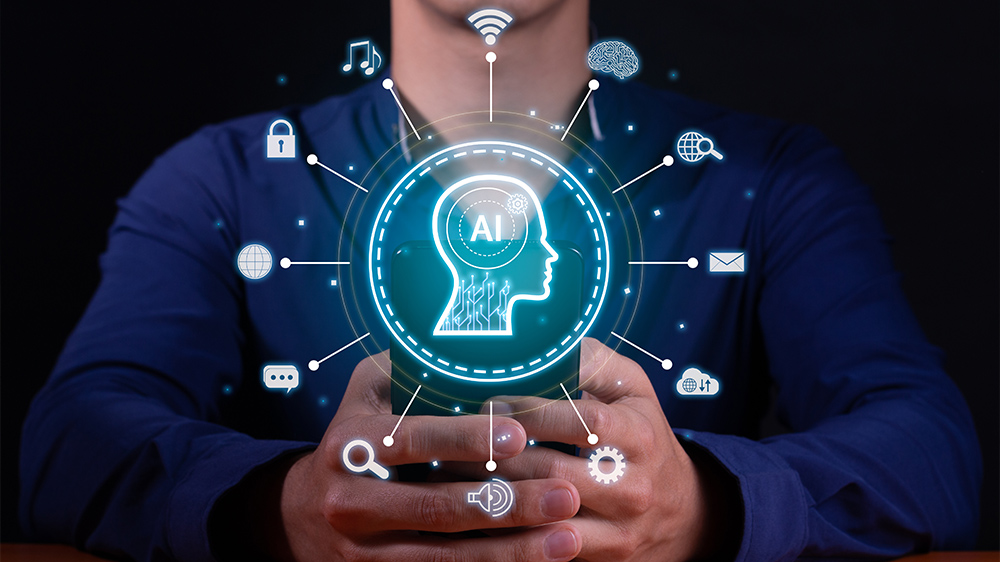The nature of work is changing drastically in this age of fast technological progress. The advent of AI and other forms of automation is changing the nature of many jobs and the competencies that employers look for in today’s employees. We must investigate the effects of these technological changes and learn about the future of work market dynamics as we approach the dawn of a new age.
The Changing Landscape of Work
The changing work landscape is influenced by technological advancements, automation, globalization, demographic changes, and societal and economic trends. Automation has revolutionized industries, increasing efficiency and productivity, but also raising concerns about job displacement. Globalization has led to increased competition and job outsourcing, reshaping sectors like technology, finance, and services. Demographic changes, such as an aging population and shifting workforce preferences, have led to increased generational diversity and the need for age-inclusive policies. Societal and economic trends, such as income inequality, the gig economy, remote work, and sustainability, have shaped work structures, emphasizing flexible work arrangements and sustainability practices.

Your personal ai assistant making the future
The Rise of Automation: Impact on Jobs and Industries
Robots, AI, and other forms of smart machinery are taking over many once human-performed occupations, and this trend is known as automation. For companies, this might mean more efficiency, less spending, and higher production. Robotic arms, driverless cars, and automated assembly lines are just a few examples of automation technology that have already found widespread use in sectors such as manufacturing, logistics, and agriculture. The nature of employment and the possibility of job loss are two issues that have been brought up by the rise of automation. It can take over for humans in some jobs, especially ones that need them to do mundane, repetitive tasks. Some jobs will be abolished entirely while others will undergo substantial modification; the effect varies across sectors and vocations. Opportunities for those with programming, data analysis, and robotics maintenance abilities may also arise as a result of automation.
Upskilling and reskilling initiatives are vital for reducing the negative effects of automation. To keep up with the ever-evolving employment environment, individuals must be flexible and constantly learn new skills. To mitigate the effects of automation on the workforce, organizations and lawmakers must invest in education and training programs, foster inclusive workplaces, and enact legislation to prevent the loss of jobs.

Top view future note on the sticker with copybooks
Artificial Intelligence in the Workplace: Opportunities and Challenges
The advent of AI has been a game-changer in the business world, allowing computers to learn and execute complex jobs once reserved for humans. The integration of artificial intelligence (AI) technologies like computer vision, natural language processing, and machine learning into a wide range of sectors and job tasks presents both possibilities and obstacles.
Opportunities:
- AI increases efficiency and productivity by automating mundane and time-consuming jobs, allowing humans to concentrate on higher-level, more strategic endeavors. Businesses may improve productivity, cut down on mistakes, and simplify processes by using algorithms driven by artificial intelligence and robotic process automation.
- AI can evaluate massive volumes of data faster and more efficiently than humans can. This allows them to make better decisions. Finance, marketing, and supply chain management are just a few of the many areas that may benefit from its data-driven suggestions, insights, and pattern-finding capabilities.
- Chatbots and virtual assistants powered by AI allow organizations to offer immediate and tailored customer service. Improved customer satisfaction and faster response times are the results of these AI systems’ ability to comprehend and answer consumer questions using natural language processing.
- By incorporating AI technology with robotic systems, such systems can carry out intricate tasks in many industries such as healthcare, logistics, and manufacturing. Because of the improvements in accuracy, velocity, and security brought about by this integration, output has gone up while expenses have gone down.
- AI promotes innovation by making it easier to create new goods, services, and ways of doing business. From driverless vehicles to tailored treatment, AI is opening up new opportunities in industries like healthcare, banking, and transportation.

We need to focus on our future goals
Challenges:
- The Potential for Job Displacement and the Necessity of Workforce Transformation is one of the main challenges. The fear of job displacement and the necessity of workforce transformation are heightened by the automation capabilities of AI. To keep up with changing demands and collaborate with AI systems, some jobs and duties may become outdated or necessitate retraining.
- There are ethical concerns to think about while using AI, such as data security, algorithmic bias, accountability, and privacy. Responsible and ethical AI usage needs openness, equity, and strong regulatory frameworks.
- A trained workforce is required to create, implement, and manage AI systems if they are to be widely used. Education and training programs that provide people with the analytical and technical abilities they need are essential for closing the skill gap.
- Establishing trust and acceptance among stakeholders, consumers, and workers is crucial for the effective integration of AI in the workplace. Building trust in AI systems requires open and honest communication, being transparent, and addressing concerns over privacy and job security.
- There will be legal and regulatory frameworks that will be needed to keep up with the fast development of AI. These frameworks will be necessary to prevent harm, handle liability concerns, and make sure that everyone follows the rules.

A professional designer is working on a tablet
Job Market Dynamics in the Digital Age
The digital era has significantly impacted the job market, altering the nature of employment, the skills employers seek, and the methods of hiring. Key features include changes in employment opportunities, the emergence of the gig economy, remote work, and ongoing education. Data analysts, cybersecurity professionals, software engineers, digital marketers, and e-commerce specialists are in high demand, while traditional occupations may evolve to require a combination of digital and technical skills. The gig economy offers temporary contracts, independent labor, and flexible schedules, allowing for more freedom and flexibility. Remote work is becoming more common due to technological advancements, enabling remote collaboration and communication. Competencies and ongoing education are crucial in the digital world, as adaptability, proficiency with technology, and digital media literacy are becoming increasingly valuable. Concerns about job displacement due to automation and AI technologies are also a concern. Talent shortages and skill gaps are a concern, with the rate of technical innovation outpacing the supply of qualified people. The internet has made it easier for entrepreneurs to establish businesses and access a global client base. To succeed in the digital age, individuals, businesses, and governments must be flexible, embrace lifelong learning, acquire digital skills, encourage entrepreneurship, and create flexible policies.

Builder working with vr glasses
Skills for the Future: Adapting to Technological Changes
Individuals need to acquire a set of talents that are both in demand now and will likely be useful in the future of work to adapt to technological developments and be ready for the workforce of the future. Some essential abilities for the future are these:
- Proficiency in Digital Literacy: Proficiency in digital literacy is defined as the capacity to utilize and understand digital technology efficiently. It encompasses abilities including knowing one’s way around a computer, being literate in information, communicating effectively online, and being aware of cybersecurity risks. Being able to understand and use digital tools effectively is crucial in today’s digital world. It opens doors to new opportunities in one’s career and personal life.
- Critical Thinking and Problem-Solving: The capacity to think critically, evaluate complicated problems, and come up with creative solutions is becoming more and more vital as technology takes over mundane jobs. The capacity to analyze data and make educated judgments is a part of these abilities, as is the capacity for creative thinking and flexibility.
- Adaptability and Flexibility: People need to be able to adjust their approach to work and adapt quickly to new technologies. Skills that will be essential in the labor market of the future include a willingness to learn new technology, an acceptance of change, and the ability to adapt fast to changing work needs.
- Emotional intelligence: With the rapid development of technology, it is more important than ever to be able to recognize and control one’s emotions and communicate with people in a meaningful way. Competencies in leadership, teamwork, self-awareness, empathy, and communication are all part of emotional intelligence. Possessing these abilities allows one to flourish in collaborative work settings, work well in teams with a variety of members, and form strong relationships.
- Data Literacy and Analysis: The capacity to understand, evaluate, and extract meaning from data sets is becoming increasingly important as the amount of available data continues to grow. Data collection, analysis, visualization, and the ability to make decisions based on data are all parts of data literacy. A talent that will be essential for organizations in the future is data literacy since data is being used more and more to drive strategies and make educated decisions.
- Creativity and Innovation: Although machines can do mundane jobs, it is human ingenuity and originality that propel development and provide fresh perspectives. There will always be a need for people who can think outside the box, come up with fresh ideas, and tackle challenges from many angles.
- Lifelong Learning: Embracing a mindset of continuous learning is crucial in today’s fast-paced technology world. To be flexible and relevant in the workplace of the future, one must be willing and able to continually upgrade their abilities, keep up with new technology and trends, and seek out opportunities for professional growth.


